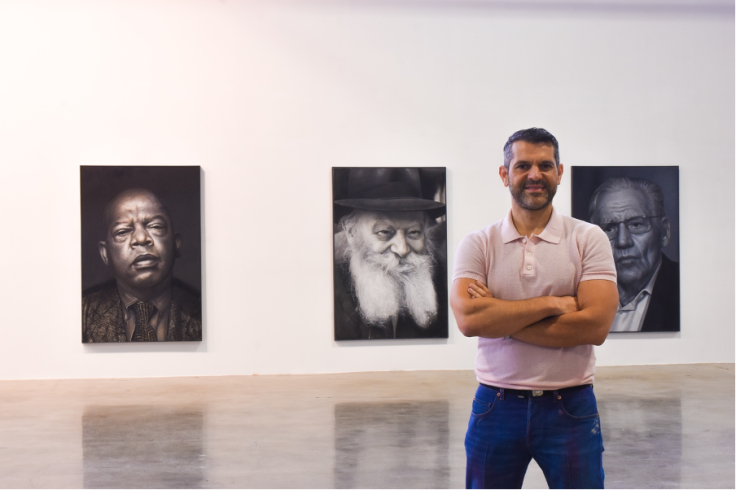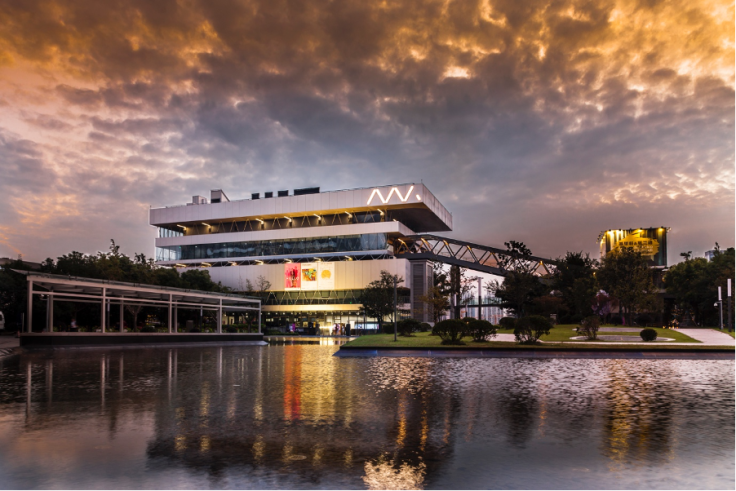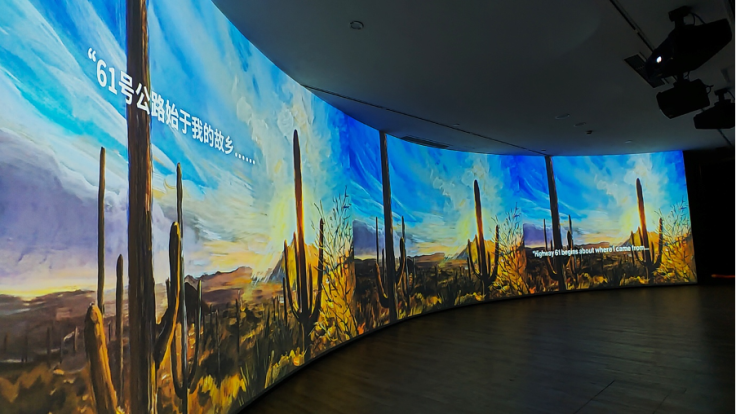“The museum becomes a stage”. Shai Baitel, Modern Art Museum Shanghai‘s newly appointed Artistic Director, talks reinvention and the immersive experience.

Ambition is not always a word associated with the world of the art museum. A doubtless-dated image of genteel scholarship suggests its senior personnel view the notion of worldly success with lofty disdain.
Shai Baitel, artistic director of the Modern Art Museum in Shanghai (MAM), is not out of that mould. His ambitions are positively vaulting: to re-invent the art exhibition as an “immersive” experiences, akin to a stage show; to use his approach to reach a generation accustomed to consuming culture via the smartphone; to make MAM a household name and to garner critical acclaim and intellectual credibility.
First how does he see his role? “An artistic director is not the same as a curator. I think of the museum as a stage, and my approach begins with the audience, in connection with the art.

“MAM is possibly the first museum in the world to be committed to what I call the ‘experiential’ offering.” Having spent the past decade in the art world, Baitel comes to MAM with experience, connections, and an out-of-the-box approach to the creation of content and experience.
As to how the museum found itself in this pioneering role, the story begins in 2019, when Baitel was brought in as artistic director for the ‘Retrospectrum’ project, the most comprehensive exhibition to date of Bob Dylan’s visual art. He recalls: “While working on the Bob Dylan exhibition, the museum was concerned that young people spend only about 15 minutes looking at the exhibits, whereas an older generation may look at just one picture for an hour.
“I suggested to them that the way to approach this problem of engaging younger people was to use the exhibition to tell a story.”
A “narrative journey” was created, which Baitel likens to a train ride “with many stops along the way”. It sets off with Dylan’s early works, alongside his first performances, in New York City, and progresses through what Baitel calls “landmark episodes” in his life, with the visual art accompanied by significant lyrics, songs and performances.
He admits he was fortunate that his debut involved such an extraordinary artist who “never stops inventing himself in writing and music and creating paintings, drawings and sculptures”.

In the wake of early acclaim for the Retrospectrum, Baitel was asked to become the first artistic director for MAM as a whole, a task he approached with relish. But before discussing the future, how did he get here?
“Not,” he laughs, “by a conventional path.” Born in Israel, he read law and history at Tel Aviv University, and worked in legal roles at the country’s Ministry of Justice. He then acquired a second law degree in New York. It was at the United Nations in New York, again in a legal capacity, that his artistic interests began to flourish.
“I took an active role in curating art exhibitions as well as organising high-profile cultural events. I was involved as a curatorial and cultural consultant on many occasions, and over the years I created performance events and art experiences for a variety of institutions and private individuals. I had the privilege to work with some of the greatest artists of our time, including Marina Abramović, Jeff Koons, Richard Serra, and Whoopi Goldberg. I always tried to pursue a delicate path to balance the educational function of art with a need for a down-to-earth, engaging and entertaining approach. Once in Shanghai, he found artistic standards to be very high and the people he dealt with were serious professionals.
Back in the present, and his ambitions for MAM. “The intention is to be a world destination, not only to exhibit artists per se but to showcase those who have changed culture. Think of the very successful David Bowie exhibition at the Victoria and Albert Museum in London, for example. We can take in fashion, dance and music – items not traditionally seen in museums.”
Baitel is clear that he would like MAM to become a household name and would consider such a status as a sign of success. “I think it would be a very great success, especially in China. This may not seem an obvious place to start what is a radically different type of art museum but the Chinese audience is very sophisticated and also quite demanding. You need to justify the hours that you are asking them to spend there, and that means having to present what you are offering in a novel way. We want to allow our audience to participate in what we are presenting.”
Success more broadly, he says, is to be measured not by traditional return on investment but in terms of reputation, critical acclaim, academic depth and the extent to which MAM is able to incorporate music, design and performance.
Says Baitel: “We aim to educate but also to entertain. Look at it in terms of water. I think of the educational aspect as the depth of the water, and the entertainment, the experience, in terms of making waves. We rely on academics, professionals and artists to ensure this all fits together, for the benefit of the audience.”
Asked whether the MAM approach could prove exportable, Baitel is unequivocal. “Certainly. At the heart of this unique approach is the treatment of art as a living thing, full of drama and excitement.
These are sometimes tense times in relations between China and the West, particularly the US, but he remains firm in the belief that art transcends frontiers and can serve as bridge between cultures and peoples. “We advocate continued dialogue between artistic genres, movements, artists and institutions based in both countries.”
Looking back to his days as a law student and legal practitioner, does he wonder at the sharp turn in the road that brought him to his present role at MAM?
“Not really. Whether it’s a legal argument or an art experience, I find that every narrative needs a rhythm that leads relentlessly to a conclusion. It’s simply in the storytelling.
Today, however, that rhythm needs to be updated to match the expectations of a new generation.”











